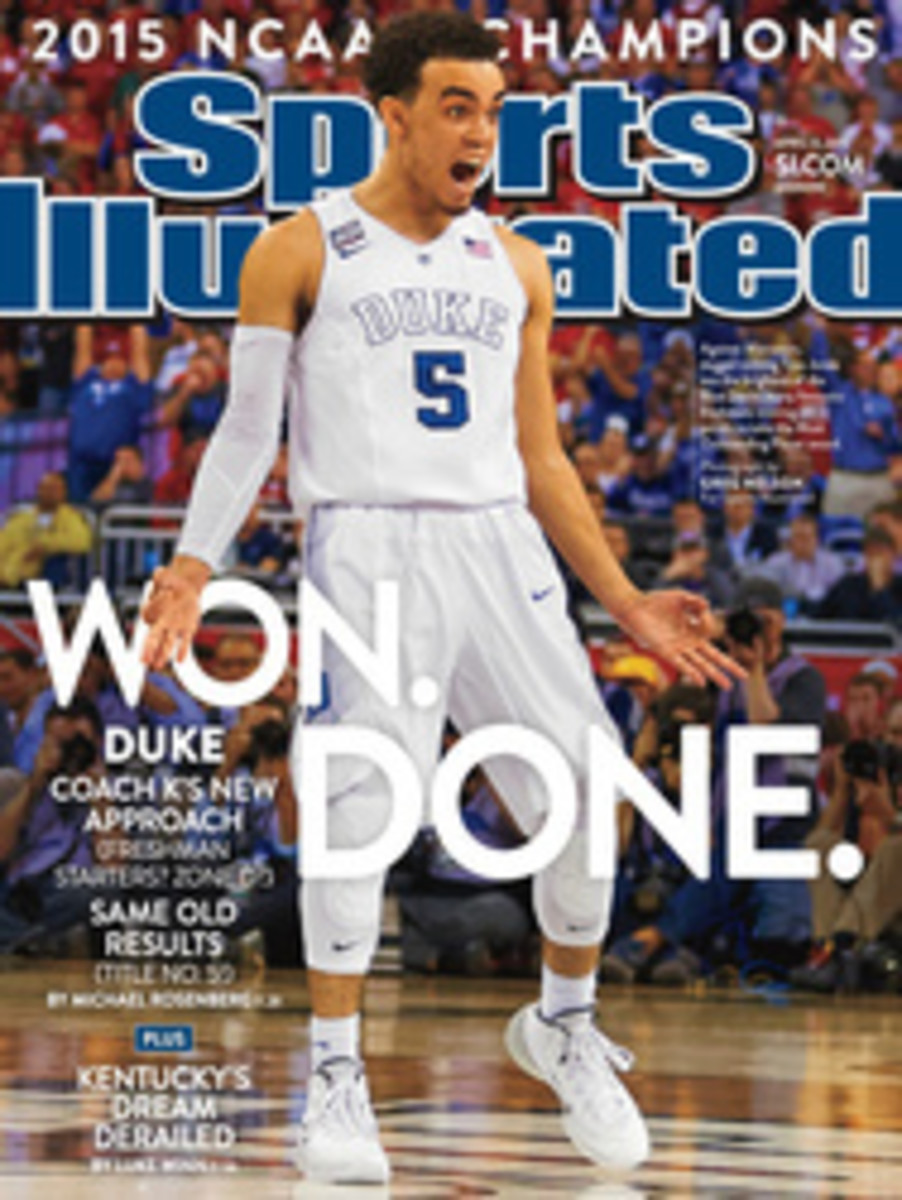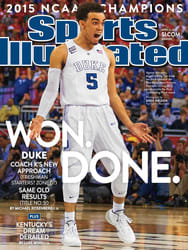
SEEING IS BELIEVING
NOT LONG AFTER the Rays asked him to play the video game in 2013, shortstop Cole Figueroa became focused on winning it. The idea was to identify as early as possible whether the seams were visible on a spinning baseball, and to hit a laptop key if they were. So Figueroa figured out how to cheat: He camped above the space bar, hitting it every time a ball appeared on-screen, seams or no. He was wrong about half the time, but the points he gained from quick reactions outweighed the points lost. "I'm really competitive," he says. When the next update of the program, called Neuroscouting, came out about a month later, the designers had added code to prevent guessing. "They were like, We get what you're doing and we don't like it," Figueroa, now a Yankees minor leaguer, says with a laugh.
Teams across baseball are working with companies like Neuroscouting to introduce vision and reaction-time programs into their evaluation and training processes. Ophthalmology in MLB has evolved: Teams who once shunned prospects who wore glasses now use EEGs to track what hitters see and when.
"Hitters have three tenths of a second on a 90-mph pitch to make a decision," says Keith Smithson, the Nationals' team optometrist. "If we can buy a tenth in there somewhere, we gain the ability to foul it off if we we're gonna miss it or put it in play if we were gonna foul it off." Smithson uses a three-tiered approach to eye care: He tests and corrects visual acuity (the average major leaguer has 20--12½ vision); trains the seven muscles around the eye to focus through drills, both high and low tech; and tries to improve visual processing, the communication between the eyes and the brain.
Yankees outfielder Carlos Beltran famously loved the ocular-enhancer machine—a device that shoots numbered and colored tennis balls at up to 150 mph while hitters try to identify them—so much that he wrote it into his 2005 contract with the Mets. That machine is still in use around baseball, as is one of its descendants, a light track, which is like a landing strip that simulates pitches at varying velocities and timings. Hitters stand 10 feet away, beneath an infrared sensor, and try to swing at the correct moment.
Those drills, and computer programs like the web-based platform Vizual Edge, help hone the focus of the eye. But the biggest advances recently have come from visual processing, or linking sight to motion, which is improved by increasingly advanced programs like the game Figueroa played.
Of course, not everything has a scientific basis. Some players use a Japanese brand of eye drops that has no effect other than to make their eyes sting, feeling it wakes them up. "Some of it, you just do because you do," says Smithson. "As long as they're not getting hurt, we let them keep doing it."
PHOTO
JONATHAN NEWTON/THE WASHINGTON POST/GETTY IMAGES
LOOK ALIVE Dr. Smithson (left, with utilityman Steve Lombardozzi) works to boost the Nationals' visual reflexes.

